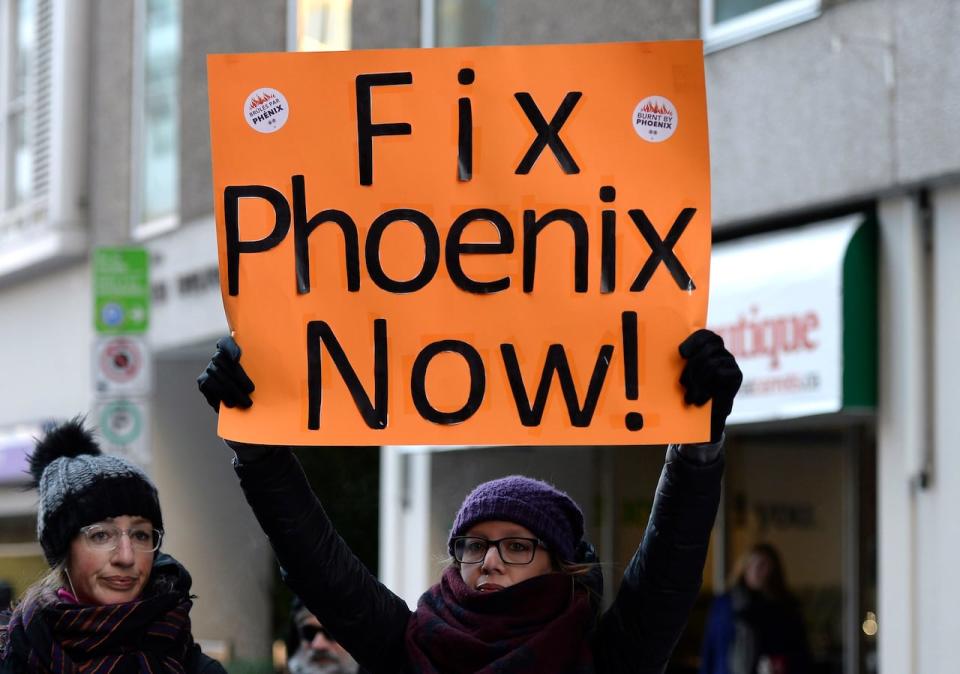Ottawa getting ready to ditch costly, error-prone Phoenix pay system

The federal government is accelerating plans to put the Phoenix public service pay system out of its misery.
Launched in 2016, the system — which cost taxpayers nearly $4 billion — has failed regularly to deliver public servants' paycheques on time, or in the right amounts.
According to the government's latest tally, more than 300,000 of 425,000 Phoenix transactions had failed to meet service standards as of last month — including 213,000 that were more than a year late.
Alex Benay, the federal official responsible for the file, said $135 million set aside in this year's budget will give a big boost to the development of Dayforce, the system which is expected to replace Phoenix in the coming years.
"We had really good news, in the sense that the government trusts our plan," he told Radio-Canada.

Alex Benay, the federal official responsible for Phoenix, said the recent federal budget allocation of $135 million will accelerate the development of a replacement system. (Simon Lasalle/Radio-Canada)
Ottawa didn't make any specific announcement related to Phoenix when the new spending was made public. It's still a major increase in funding for the Dayforce project, which was launched in 2018 with an average annual budget of $25 million.
Dayforce is a payroll and human resources management system already in use by 6,000 organizations, including the governments of Ontario and California.
The federal government plans to make Dayforce its new pay system in the coming years, after conducting a series of tests that concluded in February. Ottawa pays $36 billion a year in salaries to 420,000 people.
Benay struck a cautious note, pointing out that there's still a lot of work to do before the transition to the new system. But Ottawa has abandoned all hopes of trying to salvage Phoenix for the long term.
"We need to change this situation, and I would say that there are more and more reasons to be able and to want to make a change," he said.
A 'deplorable' payroll tool
Benay doesn't mince words when he describes the many failings of the Phoenix system, which has been the target of civil servants' frustration since it launched eight years ago.
Students and part-time workers, new parents, retirees, employees who get promotions — almost everyone in the federal public service has been affected by Phoenix's flaws.
"It is certain that the current situation is not viable in the long term," said Benay. "We have employees who work hard every day to calculate payroll. They had to build systems and tools around Phoenix to be able to pay people, to make Phoenix work, because the tool they have is deplorable."

Members of the Public Service Alliance of Canada rally during a protest on the three-year anniversary of the Phoenix system's launch in Ottawa on Thursday, Feb. 28, 2019. (Justin Tang/The Canadian Press)
A major problem with Phoenix is that it needs to operate in tandem with more than 30 distinct human resources management systems in various departments and agencies, as well as more than 100 collective bargaining agreements.
A large number of payroll officers are needed to perform different calculations for each department. And when civil servants change departments, Phoenix struggles to overcome a series of technological challenges.
The federal government's hope is that Dayforce will allow it to rely on a single tool for both payroll and managing employees' personnel files at all stages, from hiring to retirement.
"We have no intention of disintegrating [the payroll and human resource management systems] a second time and making the same mistake," Benay said.
He said Phoenix's software likely will become obsolete in the coming decade, which increases the pressure to build a new pay system.
According to Public Services and Procurement Canada, Phoenix initially cost taxpayers $300 million and the federal government has spent another $3.5 billion on it since.
While Phoenix's performance seemed to improve in the early 2020s, delays in salary processing have since ramped back up.
As it prepares to transition to a new payroll system, the government says it will use artificial intelligence tools to clean up the data in the Phoenix system and reduce the number of late payments.
The plan is to introduce Dayforce gradually in several federal departments, so that when Phoenix is finally scrapped, the new system can take off as smoothly as possible.
The Public Service Alliance of Canada said certain compensation rules could be standardized across government to ease the transition to a new pay system. However, it insisted that unions should help design and test the new system.
"If the members don't suffer, we're ready to co-operate in setting up a payroll system that works," said spokesperson Yvon Barrière. "But we need to be certain that the system will work, and that it will not disadvantage our members under collective bargaining agreements."
Another union of federal employees hopes the government will have learned its lessons from the past.
"Eight years after the implementation of the Phoenix pay system at the federal level, about a third of employees are still reporting payroll errors. As long as employees continue to experience problems, the government must continue to compensate and accommodate them," said Sean O'Reilly of the Professional Institute of the Public Service of Canada.

